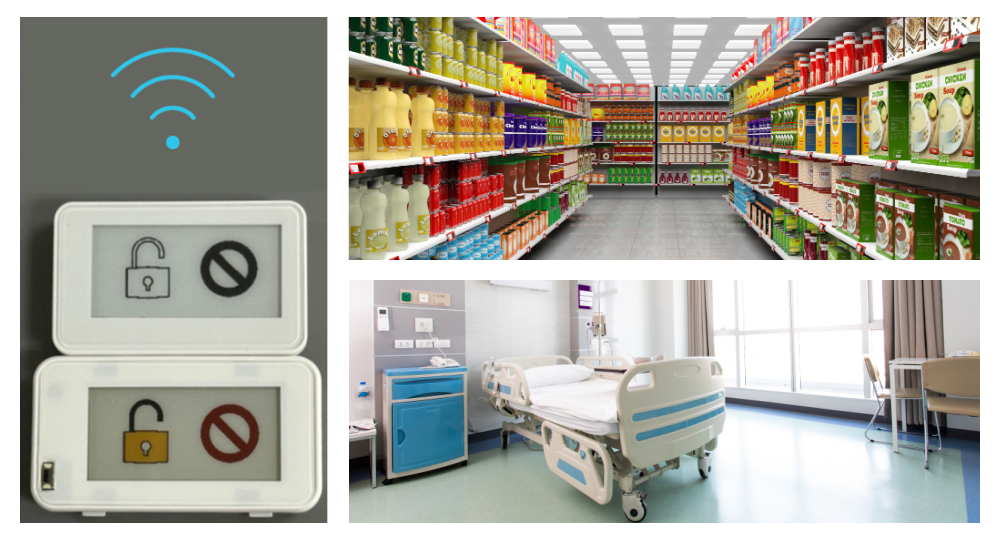Standards-Based Communications Platform for IoT

KEY INFORMATION
Electronics - Display
TECHNOLOGY OVERVIEW
A new approach to a standards-based communications protocol for one-to-many Internet-of-Things devices. Being based on a standard, adopters are free from vendor lock-in. The protocol is particularly useful for IoT devices fitted with low-power displays (e.g., electronic labels).
The technology is ideal for supermarkets (electronic price labels), pick-to-light systems, inventory management, and can easily be extended to any system where a one-to-many sensor network is critical.
Using a standards-based approach is also more environmentally friendly because users no longer need to dispose of their devices should they choose another communications service provider that uses the standard.
An open-source software framework is also available that provides a cloud-based interface for devices using this communications protocol.
TECHNOLOGY FEATURES & SPECIFICATIONS
- New approach using an existing 2.4GHz, wireless, standard protocol that is widely available.
- The technology extends the standard to an intermittent advertising framework for ultra-low power consumption on devices.
- The protocol is suitable for sending data (e.g., images and pricing) and commands (e.g., turn on an LED), as well as receiving data (e.g., temperature, sensor data, battery status), with up to 32,000 devices per access point.
- Devices can be connected to and updated within as little as 1.5 seconds.
- Open-source software framework immediately available for ease of implementation.
POTENTIAL APPLICATIONS
- Retail sector: Electronic shelf labels (ESLs) showing data and/or images, including e.g., price and product information, stock levels, and/or inventory management data. Standards-based communications ensures greater freedom-to-operate for retailers, with ESL displays ranging from 1.5” to >10” and multiple colour options (black-and-white to multiple colours).
- Inventory management/warehousing: Pick-to-light systems with displays showing inventory and updatable stock information.
- Hospitals/healthcare: Low-power information displays that can be used to show critical data (e.g., patient name, allergies, conditions), potentially replacing manually created slot-in cards.
- Sensor network: One-to-many standards-based platform for IoT sensor deployment (e.g., temperature sensors in cold-storage facility, especially if fitted with displays).
Market Trends & Opportunities
A significant opportunity exists for this standards-based communication protocol to be used in supermarket electronic shelf labels (ESLs). While a cumulative total of 788 million ESLs have been installed worldwide, the potential market is upwards of tens of billions, and one of the major reasons for slower uptake of ESLs has been market fragmentation primarily driven by the proprietary protocols offered by ESL vendors. By shifting to a standards-based communications protocol, retailers will no longer be locked-in, and can benefit from the broader ecosystem offered by a standards-based platform.
Regarding using the new protocol for IoT generally, many IoT customers have held back in adopting IoT technologies for fear of a particular technology becoming obsolete or are holding out on the promise of something better in the future. Consequently, many IoT customers partner with multiple vendors to diversify their supply of devices and ensure they are not trapped into a single vendor. While there are standards readily available for IoT already, this new implementation significantly broadens the scope by allowing for display integration as well as a higher-speed and lower-energy framework for IoT.
Unique Value Proposition
- For electronic shelf labels, the present ‘state-of-the-art’ is entirely proprietary. This technology’s unique value proposition stems from the implementation of a standards-based solution for ESLs that:
-
increases Interoperability: One of the major benefits of adopting a standards-based platform is that products and solutions from one vendor can work with those from another.
-
Improves flexibility and reduces vendor lock-in: Retailers who adopt a standards-based solution can switch to a different vendor if they become dissatisfied with their current solution provider.
-
Benefits from economies of scale: Standards-based enables greater product choice, increased competition, a larger selection of products, a reduced burden of entry, faster time to market, and collaboration from a wide number of players across the value chain.
-
-
For IoT devices, this technology further improves on ‘state-of-the-art’ protocols by increasing IoT device flexibility, improving device communications speed all the while reducing power consumption and extending battery life.
